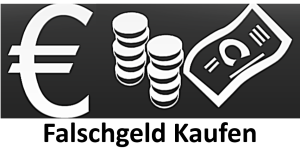
Dawna Fahey
Counterfeit German Banknotes: An In-Depth AnalysisIntro
In a significantly digital world, the attraction of counterfeit currency remains a pressing issue for federal governments and financial institutions alike. Germany, renowned for its financial stability and the strength of the Euro, is not unsusceptible to the danger of counterfeit banknotes. Counterfeit German banknotes interfere with the economy, challenge police, and affect public rely on currency. This post provides a useful summary of counterfeit German banknotes-- their history, the approaches utilized by counterfeiters, the possible repercussions for society, and ways to acknowledge legitimate currency.
A Brief History of Currency Counterfeiting in Germany
Counterfeiting has a long and storied history globally, and Germany is no exception. The country has seen its share of counterfeiting attempts, particularly throughout various crises in history:
Weimar Republic (1919-1933): Following World War I, Germany faced hyperinflation, which caused an abundance of counterfeit notes. The fast devaluation of currency made the economy vulnerable to counterfeiters.
Post-War Era: In the aftermath of World War II, beste webseite für falschgeld the establishment of the Deutsche Mark in 1948 brought a fresh start, but also a revival of counterfeiting. The intro of sophisticated security features assisted suppress this pattern.
Euro Adoption: With the intro of the Euro in 2002, Germany needed to adapt to a new currency format. This provided counterfeiters with a new target, resulting in continuous efforts by Deutsche Bundesbank (the German reserve bank) to enhance security procedures.
Methods Employed by Counterfeiters
Counterfeiters use a range of methods to create fake banknotes that can deceive the typical individual. A few of the most common approaches consist of:
Digital Printing: Advances in innovation have made it easier for counterfeiters to print high-quality imitations of banknotes using high-resolution printers and scanners.
Copy machines: People frequently underestimate the ability of contemporary photocopying technology to reproduce images with impressive accuracy. Counterfeiters frequently use copiers to create counterfeit notes and may change them with the help of software.
Old Equipment: Some counterfeiters use older approaches, such as hand-drawing functions or stamps, although this is less common in the digital age.
Professional Forge Operations: Organized criminal activity groups might operate advanced forgery operations utilizing knowledgeable specialists who develop sophisticated replicas, consisting of the usage of UV inks and ingrained security components.
Comprehending these approaches is important for the public and businesses to defend against counterfeit currency.
Effects of Counterfeit Currency
Counterfeiting has extensive repercussions that affect numerous sectors:
Economic Impact: The existence of counterfeit banknotes can lead to inflationary pressures, as counterfeit currency dilutes the value of genuine currency in flow.
Loss of Revenue: Governments experience decreased confidence in their currency systems, causing possible income loss from taxes and legitimate monetary systems.
Legal Repercussions: Individuals captured flowing counterfeit currency can face serious legal penalties, consisting of fines and imprisonment.
Public Confidence: The trust the public locations on the currency is vital for its acceptance. Widespread counterfeiting can erode this trust and can result in changes in customer behavior, such as a move towards cashless deals.
How to Identify Genuine German Banknotes
Acknowledging the credibility of banknotes is necessary for customers, sellers, and companies. Here is a concise guide on how to recognize real German banknotes:
Ultra Violet LightTry To Find Fluorescent Fibers: Genuine banknotes contain embedded fluorescent fibers that radiance under UV light.WatermarkExamine for Watermarks: All denominations of real German notes have a watermark that shows up when held against the light.Security ThreadTake A Look At the Security Thread: The security thread is embedded into the note and can be viewed as a dark stripe when viewed versus the light.Color-Shifting InkObserve the Color-Shifting Ink: Certain areas of the banknote will alter color when tilted.MicroprintingExamine for Microprinted Text: Genuine notes include tiny text that is not visible to the naked eye however can be seen under a magnifier.Feel the TextureTouch and Feel: Genuine German notes have a distinct texture due to the special paper used in their production.FAQsWhat are the most typical denominations of counterfeit German banknotes?
Counterfeiters often target higher denominations, such as EUR50, EUR100, and EUR200, due to the bigger revenues they can yield. Nevertheless, smaller denominations are not immune.
How can I report a counterfeit banknote?
If you suspect you have gotten a counterfeit banknote, report it instantly to your local police department and submit the note to a bank for analysis.
Exist any technological tools for finding counterfeit banknotes?
Yes, a number of devices are offered for retailers and banks, including UV lamps and counterfeit detection pens that react to the specific features of genuine currency.
Can counterfeit banknotes be effectively passed off in everyday transactions?
While counterfeiters try to circulate fake banknotes, the enhanced awareness and security features of legitimate currency make it increasingly tough to pass off counterfeit notes without detection.
In conclusion, counterfeit German banknotes are a substantial issue that presents challenges for authorities, organizations, and the public. A historical perspective reveals the advancement of counterfeiting techniques and their repercussions on the economy. However, by understanding the approaches utilized to recognize real banknotes and staying vigilant, people can add to the fight versus counterfeiting. The importance of preserving rely on currency can not be overstated, as it underpins the health and stability of the economy.
Made By Tag To Connect
 Italian
Italian
 हिन्दी
हिन्दी
 Arabic
Arabic
 Chinese
Chinese
 English
English
 French
French
 German
German
 Portuguese
Portuguese
 Russian
Russian
 Spanish
Spanish
 Turkish
Turkish
 Vietnamese
Vietnamese
